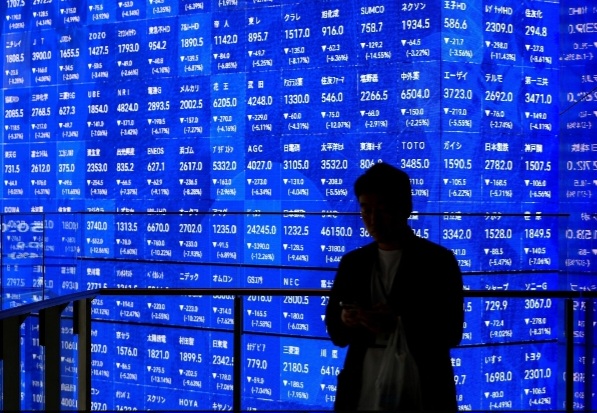The Dow Jones Industrial Average and S&P 500 ended Monday in the red following a turbulent trading day driven by uncertainty around President Donald Trump’s tariff policies. The Dow slid 345 points, or 0.9%, while the S&P 500 slipped 0.2%. In contrast, the tech-heavy Nasdaq edged up 0.1%.
Markets initially plunged at the opening bell, but quickly rebounded after a Truth Social post from Trump suggested openness to negotiating tariffs. “Countries from all over the World are talking to us,” Trump wrote, describing the negotiations as “tough but fair.” However, the optimism was short-lived as Trump soon escalated tensions by threatening a new 50% tariff on China, adding to a series of prior levies. If implemented, the total U.S. tariffs on Chinese imports would reach 104%.
That reversal sent markets back down, continuing a broader downward trend that began with Trump’s tariff announcement the previous week. The Dow recorded its worst week since 2020, while the Nasdaq officially entered bear market territory, having dropped over 20% from its peak.
Analysts pointed to the uncertainty surrounding trade policy as a key driver of volatility. Bret Kenwell of eToro highlighted the intense swings as a result of widespread unpredictability. Ivan Feinseth of Tigress Financial noted that the tariffs could slow growth, raise inflation, and force the Federal Reserve to pause interest rate changes, leading to widespread market anxiety. Still, the brief market rally on hopes of a tariff deal showed investors are eager for signs of progress.
Cryptocurrencies were also caught in the sell-off. Bitcoin fell 0.9% to around $79,000—down 30% from its January high. Ether dropped 3.4%, and Solana declined 1.1%.
Global markets followed suit. Japan’s Nikkei 225 fell nearly 9%, prompting a circuit breaker pause. Taiwan’s Taiex lost 9.7%, while Singapore’s STI dropped over 8%. South Korea’s KOSPI fell more than 5.5%, and Australia’s S&P/ASX 200 dropped over 6% before partially recovering. Hong Kong’s Hang Seng Index plunged 13.22%, its worst single-day loss since the 1997 Asian Financial Crisis, with major Chinese tech firms like Alibaba and Baidu among the biggest losers.
On the Chinese mainland, the Shanghai Composite Index fell over 7%, despite interventions by state-backed investors known as the “National Team.” India’s Sensex and Nifty also saw sharp declines of 5.19% and 5%, respectively. Overall, Asian markets suffered their worst session since 2008.
European stocks tumbled as well. The UK’s FTSE 100 and the Stoxx 600 both fell over 6%. Germany’s DAX lost 10%, France’s CAC declined 6.6%, and Italy’s FTSE MIB dropped 5.7%.
Investors braced for further volatility following Trump’s “Liberation Day” tariffs. Speaking aboard Air Force One, Trump acknowledged the market turbulence but emphasized that the U.S. would emerge stronger, blaming past leadership for unfair trade deals.
U.S. markets had already closed sharply lower on Friday, with the Dow plunging 2,230 points (5.5%), the S&P 500 falling 6%, and the Nasdaq dropping 5.8%, marking the worst trading day since 2020 and the second-worst having occurred just a day earlier.













